Don’t plan on seeing Jupiter this month. April starts with the big planet retreating from the evening sky toward solar conjunction on the 11th and 12th. Coincidentally, Mercury is at greatest elongation at the same time. After marching into the evening sky, it reaches 19.5° east of the sun. At that time, the messenger planet is between Cetus and Aries, a little closer to the star Hamal in the latter than to Menkar in the former. Venus on the same night is by the Pleiades.

After greatest elongation, mercury appears to keep climbing the night sky as the stars behind it sink sunward evening to evening. The planet is also sinking sunward, just not as fast. Give it about six more evenings and it will move at their speed. A thin crescent moon passes by Mercury on the 21st. Look for a Venus-moon pairing on the 23rd and 24th. By this time, Venus is above the Hyades V. It will continue climbing the evening sky to end the month near Elnath in Auriga.
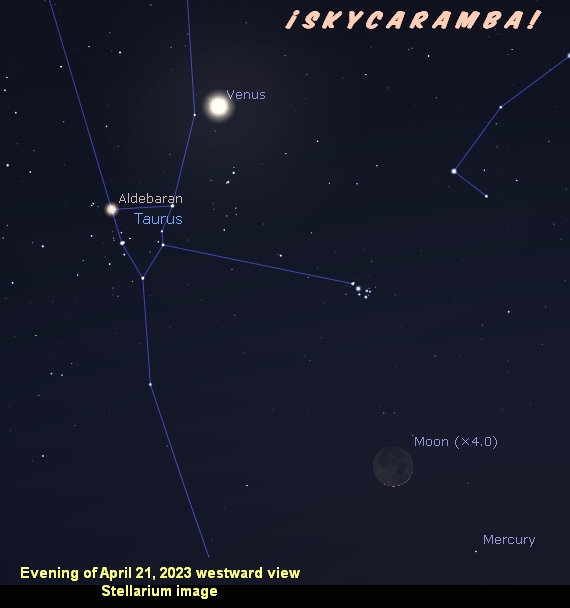
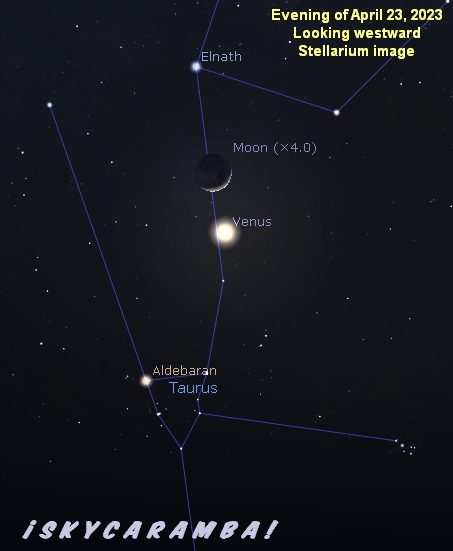
Higher in the west in the evening is Mars, starting the month at the feet of Gemini on the Castor side of the constellation. The red planet passes by Mebsuta on the 14th. Mars is between the twins on the 26th when the moon passes by. The planet’s somewhat close to Wasat at month’s end.
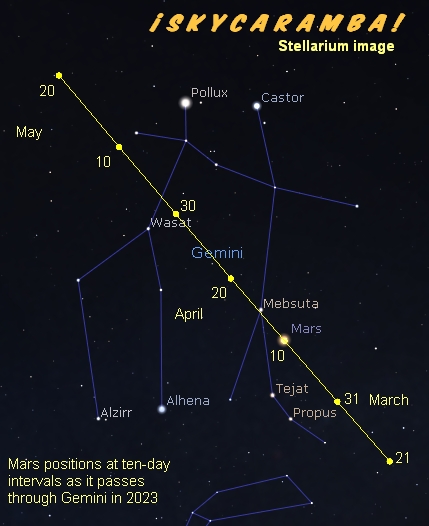
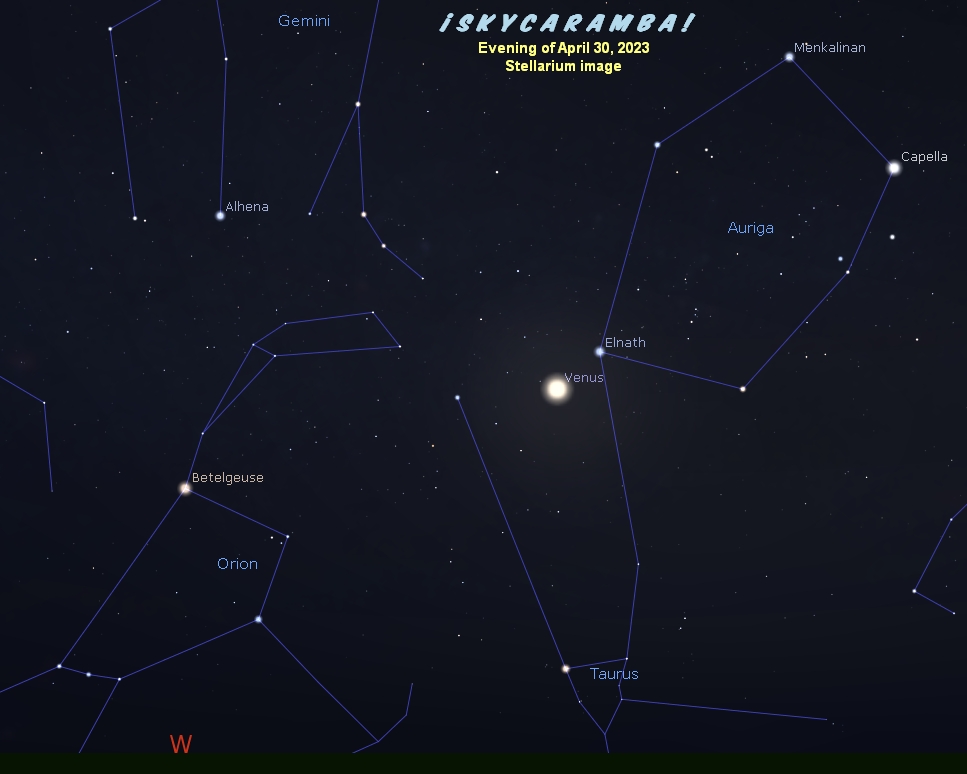
Saturn’s in Aquarius all month. See it rising close to dawn. A thinning crescent moon is close on the 16th.
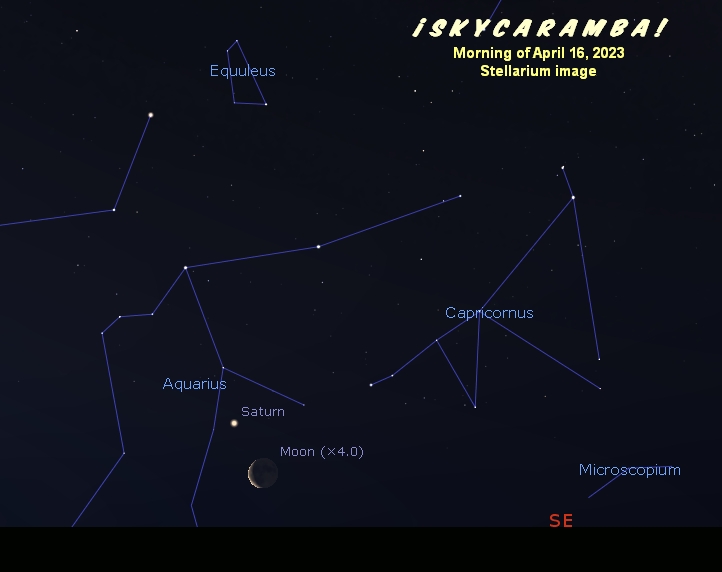
The moon’s phases this month: full on the 6th, last quarter on the 13th, new on the 20th, first quarter on the 27th.
The moon’s positions: over the equator going south on the 5th, southern lunistice on the 12th at 28.0°, over the equator going north on the 18th, and at northern lunistice on the 25th at 28.0°.
The moon’s extreme distances: perigee on the 16th at 368,000 km, apogee on the 28th at 404,400 km.
The asteroid Juno is at perihelion on the 2nd at 297 million km from the sun. That’s 1.985 astronomical units. Venus is at perihelion on the 17th at 107 million km. That’s 0.718 a.u.
The April Lyrid meteor shower is expected to peak on the 22nd. The moon’s just after new, so it won’t spoil the view. The much bigger threat is light pollution. You may see up to 18 meteors per hour at best. The peak is broad enough to see nearly that many for a few nights in a row, perhaps for a week. As the name tells you, the meteors seem to come from Lyra. That’s a northern constellation up in the morning this time of year. So the best views will be from the northern hemisphere after midnight. The meteors come from a comet that hasn’t been close to the sun since 1861. It has a 415-year orbit.
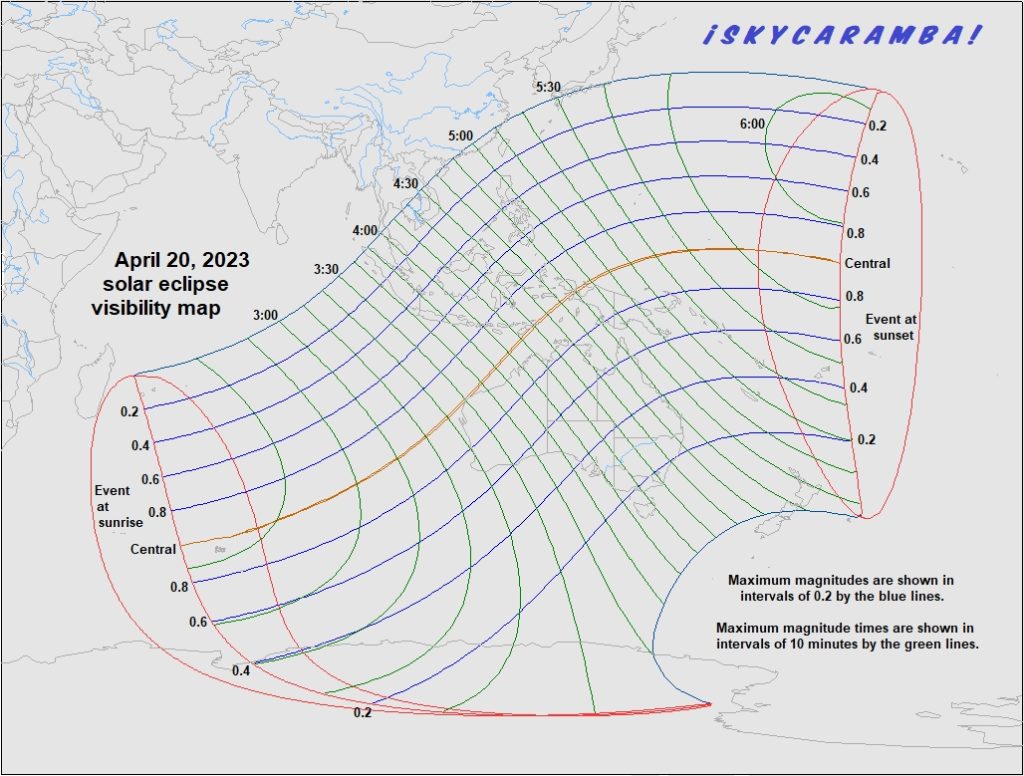
If the meteor shower isn’t the most talked about astronomical event this month, number one will likely be the solar eclipse visible from southeast Asia, part of the Indian Ocean, Australia, and part of the Pacific. Most of those places get a partial eclipse, of course. Over a period of about three hours, 15 minutes, the moon’s central shadow will track from near the Kerguelen Islands, by the northwest coast of Australia, across Indonesia, and through the Caroline Islands region of Micronesia. For most of the way along that central track, the eclipse is total. Around the middle of it, totality lasts up to one minute, 15 seconds. For just a few seconds at the beginning and again for a few seconds at the end, it’s an annular eclipse. This earns it the label “hybrid eclipse” in some accounts. Only when the eclipse is total is it safe to look at with the unprotected eye. At all other times, you must use eye protection made specifically for solar viewing.
¡SkyCaramba!
